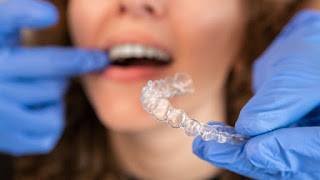Dentures: what they are, how much they cost, and how to care for them
With your dentures on, you will be able to chew, eat, speak, and smile normally. Dentures are an excellent alternative for replacing missing teeth if you have lost part or all of your teeth due to gum disease, accidents, dental decay, age, or other causes of tooth loss. Dentures give your face a more beautiful appearance.
Low density bone and weak or low quality bone, both of which are required for implant surgery, may prevent you from receiving a dental implant. However, if you have numerous missing teeth in your dental arch, you may not be able to acquire dental bridges, making them a danger and a waste of money and effort. As a result, you can choose dentures, which have been used to replace lost teeth by the majority of individuals of all ages.
Dentures aren't necessary.
Dentures aren't exclusively for senior citizens. Dentures are also a suitable option for young people who have a significant edentulous empty area due to lost teeth. Wearing dentures is vital for socializing, preserving your teeth's function, and returning to your everyday routine. Dentures are used for the following purposes:
Anyone who has many missing teeth or is missing all of their teeth
Senior citizens. When our elderly reach the age of 60, they are most probable candidates for dentures. Dentures are worn by approximately 90% of edentulous persons (those who have lost all of their teeth).
Young children and people who have lost teeth as a result of accidents, traumas, infections, or severe tooth decay
When a dental implant is not an option. Young people and people with poor bone quality, for example.
Dentures are created in a variety of ways.
In most cases, you will need to schedule many sessions to receive your custom-made dentures. To construct your dentures, a dentist or prosthodontist who specializes in dental restorations will collaborate with lab workers. The following are the key steps in making dentures:
To determine the optimal upper and lower occlusion of your jaws, gum diseases, dental arches, and jaw bones, impressions of your oral structures, gums, dental arches, and jaw bones are obtained. Dentists will have access to high-tech scanning instruments that will allow them to obtain extremely precise imprints.
Following that, wax patterns and models are made in the lab using the impressions collected. To protect oral soft tissues, the dentist will install fake teeth and a denture foundation that matches your gum color. You'll be able to select the optimal tint and tooth color to complement your look and other teeth (in case of partial denture).
You try on your clothes at the try-in appointment.

Comments
Post a Comment